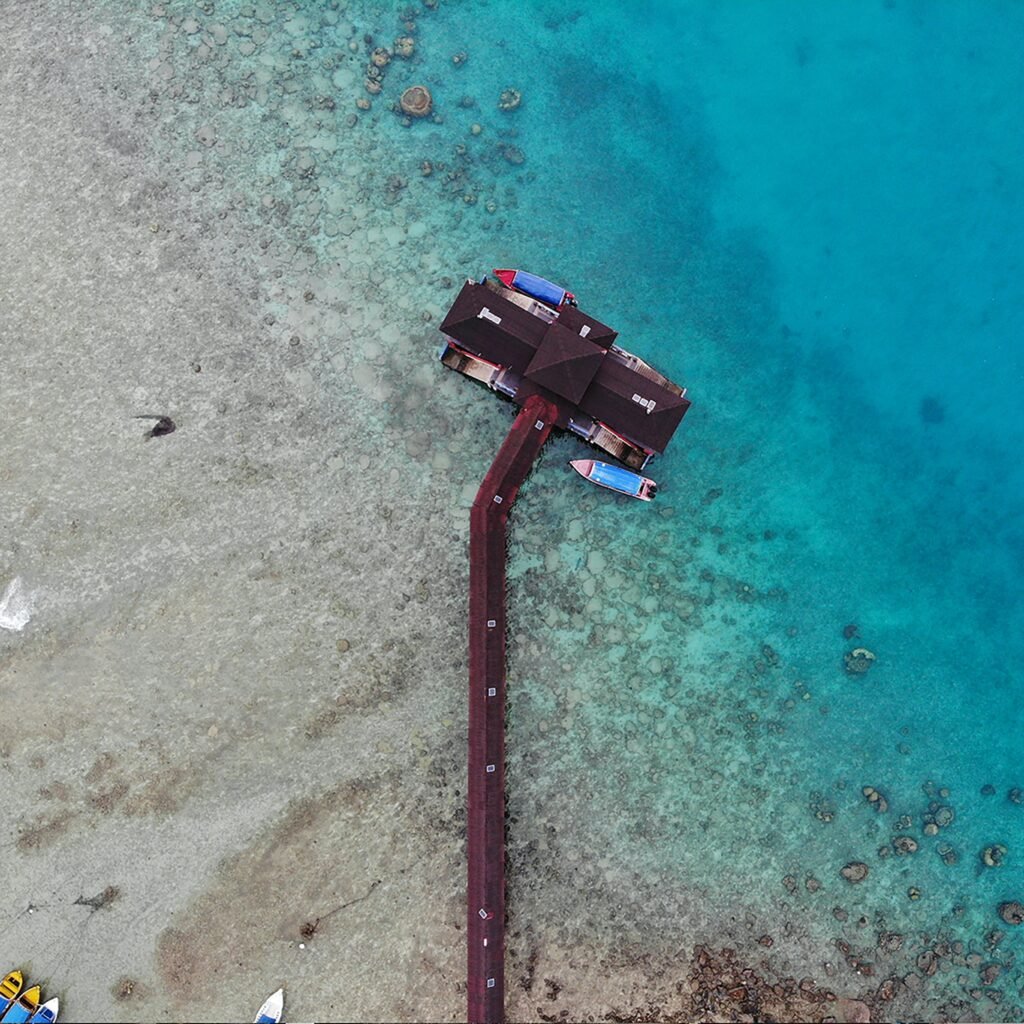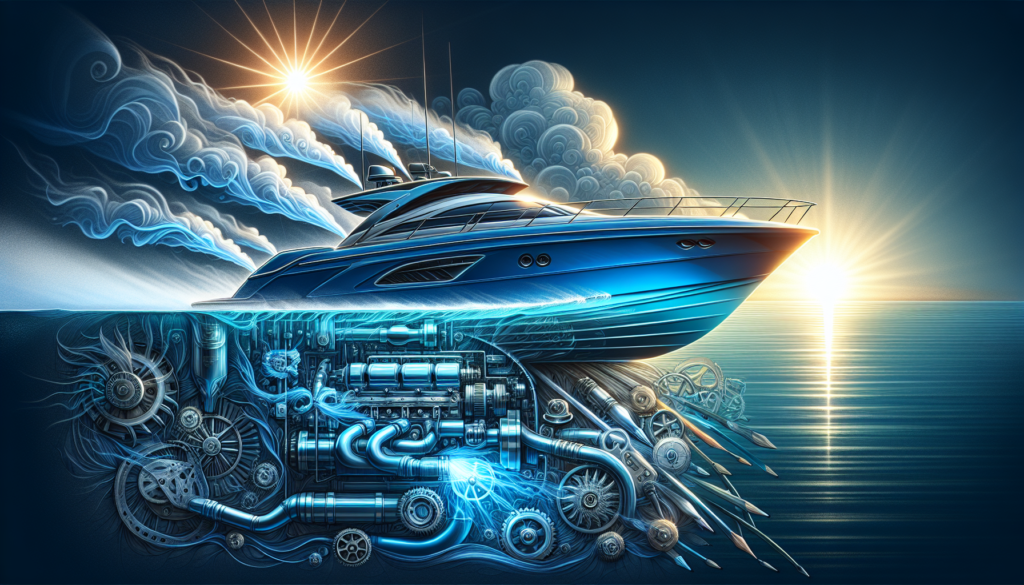If you’re a boat enthusiast looking to enhance your engine performance, one area you might want to consider is modifying your boat’s cooling system. This article provides a step-by-step guide on how to safely make modifications that can help optimize your boat’s engine performance. By making small changes and following the recommended procedures, you can ensure that your boat’s cooling system is efficient and reliable, ultimately enhancing your overall boating experience.

1. Understanding the Importance of a Boat’s Cooling System
The cooling system is an essential component of a boat’s engine, playing a crucial role in maintaining optimal performance and preventing damage. Understanding the importance of the cooling system is key to ensuring the longevity and efficiency of your boat’s engine.
1.1 Why is a Cooling System important?
A boat’s cooling system is responsible for regulating the engine temperature by dissipating heat generated during operation. Without a properly functioning cooling system, the engine can overheat, leading to costly repairs and potential breakdowns. The cooling system also helps prevent corrosion and lubricates engine parts, ensuring smooth operation.
1.2 How does the Cooling System affect Engine Performance?
The cooling system’s performance directly impacts the engine’s overall performance and efficiency. An inefficient cooling system can cause the engine to run hotter, leading to reduced power output, increased fuel consumption, and potential engine damage. On the other hand, an optimized cooling system helps maintain a stable engine temperature, ensuring optimal performance and fuel efficiency.
1.3 Common Cooling System Problems
Boat owners should be aware of common cooling system problems that can arise. These include coolant leaks, clogged or damaged hoses, malfunctioning water pumps, and corroded heat exchangers. Regular maintenance and inspection can help identify these issues early on, preventing further damage and potential engine failure.
2. Assessing the Current Cooling System
Before proceeding with any modifications, it’s essential to assess the current cooling system of your boat. This evaluation will help determine if any upgrades or repairs are necessary.
2.1 Evaluating the System’s Components
Start by inspecting each component of the cooling system, such as the radiator or heat exchanger, water pump, hoses, and fans. Look for signs of wear and corrosion, as well as any loose connections or leaks. Understanding the condition of each component will guide you in deciding which areas need attention or upgrades.
2.2 Checking for Signs of Wear and Tear
Look for any visible signs of wear and tear, such as cracks, rust, or coolant leaks. These can indicate problems with the cooling system that may require immediate attention. Additionally, pay attention to any unusual noises or vibrations that could hint at an underlying issue.
2.3 Identifying Potential Performance Issues
Assess the current cooling system’s performance by monitoring the engine temperature during various operating conditions. If the engine tends to run hot or experiences significant temperature fluctuations, it may be an indicator of an inefficient cooling system. Identifying these performance issues will help determine the necessary modifications or upgrades needed for optimal engine performance.

3. Selecting the Right Upgrades for Your Boat’s Cooling System
Once you have assessed the current cooling system, it’s time to consider upgrading or modifying it to enhance engine performance. Here are some factors to consider when selecting the right upgrades for your boat’s cooling system.
3.1 Researching Cooling System Upgrades
Take the time to research and understand the various cooling system upgrades available in the market. Look for reputable manufacturers known for their quality and performance. Read customer reviews and gather information about the specific benefits and features of each upgrade option.
3.2 Considering Your Boat’s Engine Specifications
Consider your boat’s engine specifications when selecting cooling system upgrades. Different engines may have different cooling system requirements. Ensure that the upgrades you choose are compatible with your boat’s engine and can handle the demands of its operation.
3.3 Consulting with Experts for Recommendations
For expert advice and recommendations, consult with marine engineers, boat builders, or mechanics who have experience with cooling system modifications. They can provide valuable insights and help you select the most suitable upgrades based on your boat’s specific needs and performance goals.
4. Upgrading the Boat’s Cooling System
Now that you have gathered the necessary information and selected the appropriate upgrades, it’s time to upgrade your boat’s cooling system. Here are the key steps involved in the process.
4.1 Draining and Flushing the Current System
Before installing any upgrades, it is crucial to flush out the old coolant and remove any debris or contaminants in the system. Follow the manufacturer’s guidelines for proper draining and flushing procedures to ensure a clean and efficient cooling system.
4.2 Installing High-Performance Radiators or Heat Exchangers
One of the most significant upgrades you can make to your boat’s cooling system is installing high-performance radiators or heat exchangers. These components are designed to provide superior cooling capabilities, allowing for better heat dissipation and improved overall engine performance.
4.3 Upgrading the Water Pump
Replacing the water pump with a high-quality and higher capacity model can significantly enhance the cooling system’s efficiency. A more powerful water pump can ensure better circulation of coolant and reduce the risk of overheating, especially during demanding operations or in warmer climates.
4.4 Installing Additional Cooling Fans
Consider installing additional cooling fans to improve air circulation and increase the cooling system’s effectiveness. This is especially beneficial for boats operating in hot weather conditions or those with high-performance engines that generate more heat. Properly positioned cooling fans can help maintain a stable engine temperature and prevent overheating.
4.5 Enhancing Water Circulation
To optimize water circulation within the cooling system, consider upgrading or replacing the existing hoses and fittings. Use high-quality materials that are resistant to corrosion and deterioration, ensuring long-term durability and efficient water flow throughout the system.

5. Modifying the Cooling System’s Air Flow
In addition to upgrading the cooling system’s components, modifying the air flow can further improve engine performance and temperature regulation. Here are some ways to enhance the cooling system’s air flow.
5.1 Optimizing Air Intake and Ventilation
Ensure that the boat’s air intake and ventilation systems are designed to maximize air flow. Without proper air circulation, the cooling system may struggle to dissipate heat effectively. Clear any blockages or obstructions that may hinder the flow of air into the engine compartment.
5.2 Installing Air Ducts or Scoops
Consider installing air ducts or scoops to direct air towards the cooling system components. These additional components can help channel a more significant amount of cool air to critical areas of the cooling system, improving its efficiency and overall performance.
5.3 Using Heat-Resistant Insulation Materials
To minimize heat transfer to other engine components, use heat-resistant insulation materials. This can help prevent the heat generated by the cooling system from affecting nearby sensitive parts or electrical systems, improving overall safety and performance.
6. Monitoring and Maintaining the Upgraded Cooling System
Once you have upgraded your boat’s cooling system, it is essential to regularly monitor and maintain its performance to ensure optimal engine operation. Here are some maintenance tips to keep your cooling system in top shape.
6.1 Regularly Checking the Cooling System’s Performance
Monitor the engine temperature and cooling system performance during different operating conditions. If there are any fluctuations or unusual readings, investigate and address them promptly. Regularly inspecting the cooling system will help detect any potential issues early on and prevent major damage.
6.2 Maintaining Proper Coolant Levels and Quality
Regularly check and maintain the appropriate coolant levels in the system. Follow the manufacturer’s guidelines for the recommended coolant type and ensure it is of high quality. Periodically change the coolant to prevent contamination, which can negatively impact the cooling system’s effectiveness.
6.3 Conducting Regular Cleaning and Maintenance
Clean the cooling system regularly to remove any accumulated debris or sediment that may impede its performance. Pay attention to the radiator or heat exchanger fins, hoses, and water pump, ensuring they are free from clogs or corrosion. Regular maintenance will prolong the life of your cooling system and optimize its efficiency.
6.4 Addressing Issues Promptly
If you notice any signs of cooling system problems, such as coolant leaks, strange odors, or elevated engine temperature, address them promptly. Ignoring or delaying repairs can cause further damage to the cooling system and other engine components, leading to costly repairs and potential safety hazards.

7. Considering Safety Precautions
When modifying your boat’s cooling system, it is essential to prioritize safety to ensure the longevity and safe operation of your vessel. Here are some safety precautions to keep in mind.
7.1 Ensuring Proper Engine Grounding
Proper engine grounding is crucial for electrical safety and the prevention of galvanic corrosion. Ensure that the engine and associated electrical components are properly grounded according to the manufacturer’s recommendations. This will help protect your cooling system and other critical engine parts.
7.2 Following Manufacturer Guidelines
Always follow the manufacturer’s guidelines when modifying your boat’s cooling system. This includes selecting compatible upgrades, following proper installation procedures, and adhering to recommended maintenance schedules. Deviating from these guidelines can compromise the system’s performance and pose safety risks.
7.3 Using Quality Parts and Materials
Use only high-quality parts and materials when upgrading or repairing your boat’s cooling system. Cheap or substandard components may fail prematurely or negatively impact system performance, compromising the safety and reliability of your boat.
7.4 Regularly Inspecting the Cooling System
Regularly inspect the cooling system for any signs of wear, leaks, or damage. Look for loose connections, corroded fittings, and any other issues that could compromise the system’s integrity. Addressing problems early on will help minimize the risk of accidents or system failure.
8. Professional Help and Expert Opinion
When in doubt or if you lack the necessary expertise, seeking professional help and expert opinion is highly recommended. Here are some ways to access expert advice for your boat’s cooling system modifications.
8.1 Consulting with Marine Engineers
Marine engineers specialize in boat systems, including cooling systems. Consult with a marine engineer to receive expert guidance and recommendations specific to your boat’s cooling system requirements. They can provide valuable insights into the best upgrades and modifications to enhance engine performance safely.
8.2 Seeking Advice from Boat Builders or Mechanics
Reach out to boat builders or mechanics who have experience with cooling system modifications. They can offer practical advice based on their hands-on expertise, helping you make informed decisions regarding your boat’s cooling system upgrades.
8.3 Visiting Boat Modification Workshops or Conventions
Attending boat modification workshops or conventions provides an excellent opportunity to learn from industry experts and fellow boat enthusiasts. These events often offer insights into the latest cooling system advancements, best practices, and recommendations. Networking with professionals in the field can provide valuable guidance for your specific cooling system modification needs.

9. Testing and Verifying Performance
After completing the cooling system modifications, it is essential to thoroughly test and verify the changes made to your boat’s cooling system. Here’s how to do it effectively.
9.1 Conducting Initial Performance Tests
Run the engine and monitor the temperature closely during initial performance tests. Ensure that the cooling system is effectively dissipating heat and maintaining stable temperatures under various operating conditions. Look out for any warning signs or abnormalities that may indicate an issue with the modifications.
9.2 Monitoring Changes in Engine Temperature
Continuously monitor and record the engine temperature over an extended period after the cooling system modifications. Compare the data to pre-modification performance to identify any improvements or potential areas of concern. Assessing the changes in engine temperature will help validate the effectiveness of the cooling system modifications.
9.3 Assessing Overall Engine Performance
Evaluate the overall engine performance after the cooling system modifications to ensure your boat is achieving the desired results. Monitor factors such as power output, fuel efficiency, and reliability, and make adjustments as needed. The goal is to optimize engine performance while maintaining safe operating temperatures for a smooth and enjoyable boating experience.
10. Conclusion
Modifying your boat’s cooling system for improved engine performance is a worthwhile endeavor. By understanding the importance of a boat’s cooling system and following the steps outlined in this article, you can safely upgrade your cooling system to enhance your boat’s performance, fuel efficiency, and overall longevity. Remember to prioritize regular maintenance, seek professional advice when needed, and always prioritize safety when making modifications. With a well-designed and properly functioning cooling system, you can enjoy the benefits of a high-performance engine while cruising the waters with peace of mind.


